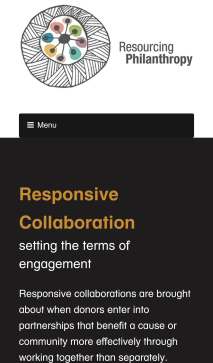Gabrielle Ritchie | Director, The Change Room | 23rd May 2017
Many multiple months have passed since I wrote South African Philanthrofacts 1 and 2 (no need to check back!) – but better late than never is one of my life mottos, and it applies here too. So this is South African Philanthrofacts 3!
PF 1 was about the common knowledge that “little is known about South African philanthropy” – so I provided ten possible sources that could be consulted and pursued so that we could find out more about this terrain.
PF 2 was about the politics of philanthropy and who benefits from the ever-changing and whimsical sympathies of the benefactors. That piece looked specifically at summer fire-fighting in the Cape Peninsula area, and the politics of an incredibly successful radio appeal for funding support for fire-fighting.
The focus for South African Philanthrofacts 3 is TEN things you might not know about South African Philanthropy:
- The first-ever Chair in African Philanthropy has been established at the Wits Business School. Acknowledgement loudly goes to Dr Bheki Moyo and Southern Africa Trust, and Wits Business School, for pulling this initiative together.
- I am the first PhD student (actually, I might be the first student!) under the new Chair (Professor Alan Fowler). It is also the first Chair in Philanthropy on the continent. Big FIRSTS.
- The Social Justice Initiative has been established to provide a smooth mechanism for South Africans (and others) to support social justice work with their philanthropic giving – including work around gender-based violence; women’s economic empowerment and other issues central to South Africa’s social development.
- There are a number of different estimates around the ZAR scale of private philanthropy in our country. The Independent Philanthropy Association of South Africa (IPASA), when it was still the Private Philanthropy Circle based at Inyathelo: The South African Institute for Advancement, estimated that it represented around R1.5billion (in 2014) in annual grant spend. It is not possible to extrapolate this out because, although IPASA represents somewhere between 25 and 35 philanthropic entities, the number of formal donor foundations in South Africa is completely unknown. I have been told verbally in passing (and am not able to reference this), that recent research has revealed that private philanthropy in SA is worth over R40billion annually – but I am reserving my right to see this as a bit of a stretch and I really look forward to being able to unpack that number.
- South Africans with disposable income don’t give enough. We don’t give enough. I often wonder what we are holding on to. If we are not investing in our own social development, then who on earth is going to?
- There are ENDLESS incredible projects to support. If you have disposable funds or are thinking of investing some money in social development, let me know. I would be delighted to point you in some right directions. There is superb work happening in job creation and support for micro-entrepreneurs – such as The Big Issue (declaration: I am the Chair of the Board!); in education – for example, Partners for Possibility; in health – health-e news is one such project; working to expose and end corruption – such as Corruption Watch; to develop community-based health care projects – like NACOSA is doing nationally; standing for our rights as citizens to be able to access information – such as Right to Know and Amabhungane. Really endless, people. It is not hard to find a project or a cause. But if you are struggling to decide where to invest, I would be more than happy to provide information and find you some good, reliable, dependable, hardworking, effective projects to support!
- While many speak of things changing rapidly in the philanthropy space, this is not really the case. There is mention, for example, of the potential for incredibly exciting shifts and wild innovation such as consulting directly with communities and activists on the ground. Yes, apparently this is new and wildly innovative. It is also something that has been discussed for years, and for which calls have been made by the very people living in communities and working on the ground. So perhaps it is “new” because the philanthropists are finally hearing it? Come, people – there needs to be a far smaller gap between what how we do philanthropy and how we KNOW we should do philanthropy.
- There are very few people talking much at all locally about philanthropy, funding, grantmaking, social justice and social development. To listen to those who are sharing their pearls, follow these folk on Twitter: @RAITHFoundation | @SocialJusticeSA | @BerthaFN | @OtherFoundation | @Tshikululu | @bheki_moyo | @shelaghgastrow | and me on @philanthropiSA | If you know of others, please share!
- Personal philanthropy is still not much of a discussion topic, not amongst traditional white wealth in South Africa anyway. I think we might be stuck a bit in the British tradition of “we don’t discuss money… it’s impolite”. But how grand would it be if we all spoke about what we invest socially, why we chose those causes and/or organisations, whether others know of good projects needing support, how we decide as individuals whether projects are support-worthy, what we think we can achieve with our particular investment choices. Wouldn’t it be great? Wouldn’t it?!
- South African philanthropy is part of a much broader philanthropy space across the whole continent. As such, it is part of a growing conversation about practice, process, people, and pathways in giving money in support of a bigger social project. It is exciting stuff – and these times will become ever-more interesting as our understanding of the breadth of practices of different kinds of philanthropies becomes more and more evident on the continent.












